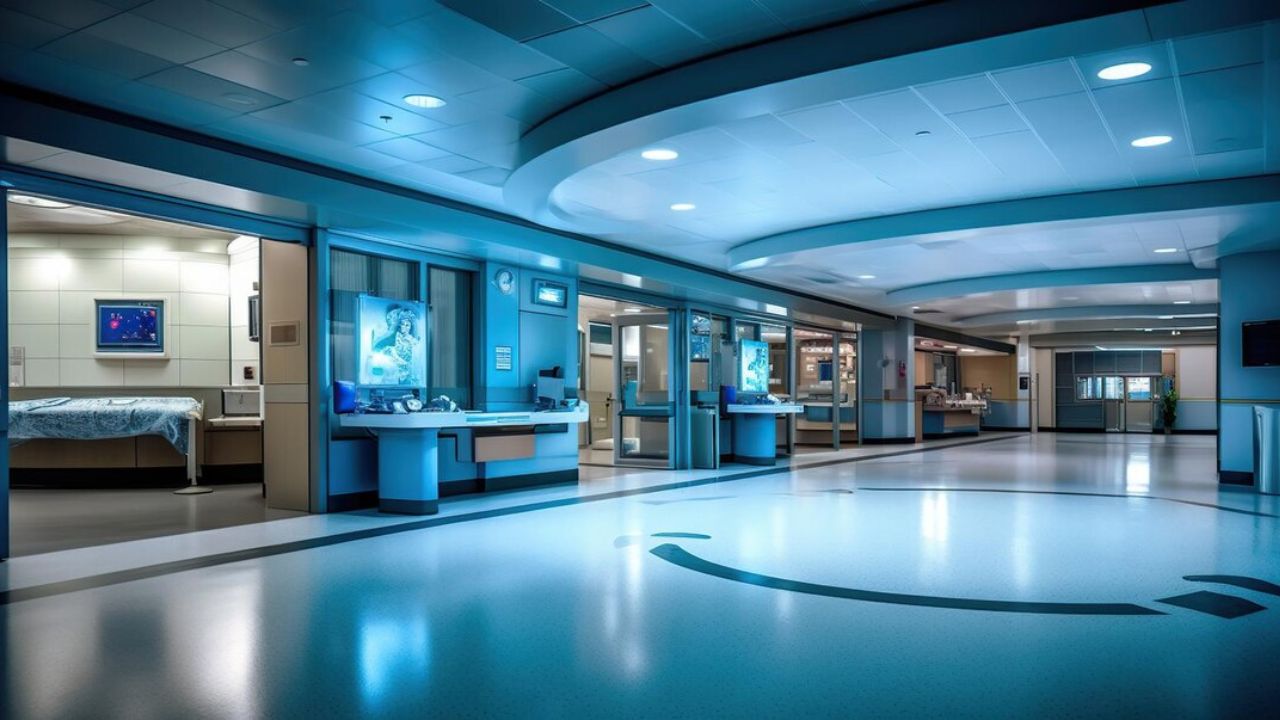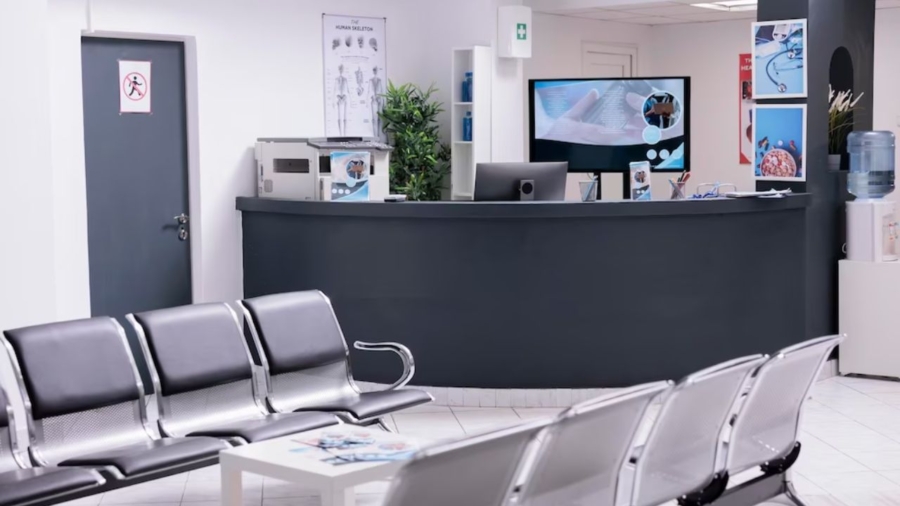Hospital planning and designing are critical aspects of creating healthcare spaces that cater to the needs of patients, healthcare professionals, and the community at large. The process involves a multidisciplinary approach, considering factors such as functionality, aesthetics, safety, and technology integration. In this comprehensive guide, we will delve into the intricacies of hospital planning and designing, exploring key concepts, best practices, and emerging trends in the field.
1: Understanding the Importance of Hospital Planning and Designing
Hospital planning and designing are pivotal aspects in the evolution of healthcare spaces. Over the years, there has been a transformative shift from traditional hospital layouts to patient-centered designs that prioritize holistic healing. The impact of hospital design on patient outcomes cannot be overstated, as it encompasses creating environments that promote well-being, comfort, and dignity. Incorporating natural light, green spaces, and a focus on privacy are essential elements in fostering healing atmospheres. Moreover, functional requirements in hospital planning involve strategic zoning for specialized departments, integration of advanced technology infrastructure, and strict adherence to healthcare regulations and standards. Recognizing the significance of these aspects ensures that hospitals not only meet the immediate needs of patients and staff but also lay the foundation for adaptable and future-ready healthcare spaces.

Understanding the importance of hospital planning and designing is crucial for creating healthcare environments that are not only functional but also conducive to optimal patient care. Hospital planning involves a meticulous process of determining spatial layouts, allocating resources, and anticipating future healthcare needs. Designing healthcare facilities considers aesthetics, functionality, and the well-being of patients, staff, and visitors. The built environment profoundly influences patient experiences, treatment outcomes, and operational efficiency. Well-thought-out designs enhance patient satisfaction, promote healing, and facilitate streamlined workflows for healthcare professionals. Recognizing the significance of hospital planning and designing is imperative in ensuring that healthcare facilities evolve with the dynamic landscape of medicine, technology, and patient expectations, ultimately contributing to the delivery of high-quality, patient-centered care.
Understanding the importance of hospital planning and designing is paramount in creating healthcare environments that seamlessly align with the complex needs of patients, healthcare professionals, and the broader community. The process involves meticulous considerations, from spatial layouts that optimize patient flow to the integration of cutting-edge technologies and adherence to stringent healthcare regulations. Well-thought-out designs enhance patient experiences, contribute to efficient workflows, and foster a healing atmosphere. Hospital planning not only addresses current healthcare demands but also anticipates future challenges, emphasizing adaptability and sustainability. The significance lies in the profound impact that well-designed healthcare facilities have on patient outcomes, staff satisfaction, and overall community well-being. Recognizing the importance of hospital planning and designing is foundational for creating environments that prioritize both the delivery of exceptional healthcare services and the holistic well-being of those engaging with the healthcare system.
2: Impact of Hospital Design on Patient Outcomes
The impact of hospital design on patient outcomes is a critical consideration in the realm of hospital planning and designing. A well-designed healthcare environment can significantly contribute to positive patient experiences and improved health outcomes. Healing environments that prioritize factors such as natural light, comfortable furnishings, and aesthetically pleasing spaces have been shown to reduce stress and anxiety among patients. The incorporation of green spaces and views of nature not only enhances the overall ambiance but also plays a role in promoting healing and recovery. Patient privacy and dignity are paramount, influencing the overall sense of well-being. Effective hospital planning ensures that spaces are not only functional but also conducive to creating a supportive and therapeutic atmosphere, ultimately contributing to enhanced patient satisfaction and positive health outcomes.

The impact of hospital planning and designing on patient outcomes is profound, shaping the overall healthcare experience and influencing recovery trajectories. A well-designed hospital, crafted through meticulous planning, can contribute significantly to positive patient outcomes. Thoughtful layouts, patient-friendly spaces, and accessibility considerations can enhance the overall well-being of patients. Natural light, soothing colors, and comfortable environments foster a healing atmosphere. Efficient spatial planning aids in quick access to medical services, reducing wait times and improving response times during emergencies. The integration of advanced technologies and infection control measures within the design further ensures a safer environment for patients, minimizing complications. In essence, hospital design becomes a critical determinant in patient satisfaction, treatment efficacy, and the overall quality of healthcare delivery. Recognizing the symbiotic relationship between hospital planning, design, and patient outcomes underscores the importance of creating environments that prioritize both medical functionality and the holistic well-being of individuals seeking care.
The impact of hospital planning and designing on patient outcomes is pivotal, encompassing a spectrum of factors that directly influence the healthcare experience and recovery process. Thoughtful design choices in hospital planning, such as well-considered layouts, strategic allocation of spaces, and integration of patient-friendly environments, contribute significantly to positive patient outcomes. A well-designed hospital ensures efficient workflows, reducing wait times and facilitating timely access to medical services. Considerations for infection control measures, accessibility, and the incorporation of natural light and soothing aesthetics also play a crucial role in promoting patient well-being. The built environment directly affects the mental and emotional state of patients, influencing their overall satisfaction and, consequently, their recovery journey. In essence, hospital design is a dynamic component that not only supports medical functionality but also plays a profound role in shaping the holistic healthcare experience and outcomes for individuals seeking care within these carefully crafted spaces.
3: Functional Requirements in Hospital Planning
In the intricate process of hospital planning and designing, functional requirements play a pivotal role in shaping the efficacy and organization of healthcare spaces. Zoning for specialized departments is a critical aspect, facilitating a well-structured layout that optimizes patient care and streamlines operational efficiency. The integration of advanced technology infrastructure is imperative in modern hospital planning, encompassing the seamless incorporation of electronic health records (EHR), telemedicine facilities, and cutting-edge medical equipment. Adherence to healthcare regulations and standards ensures that the facility not only meets legal requirements but also prioritizes the safety and well-being of patients and staff. Functional requirements form the backbone of hospital planning, ensuring that the designed spaces are not only aesthetically pleasing but also functionally efficient, promoting a conducive environment for healing and healthcare delivery.

Addressing functional requirements is a cornerstone in the complex process of hospital planning and designing. The functionality of healthcare facilities depends on the seamless integration of spaces that cater to a spectrum of medical services, patient needs, and administrative functions. Architects and designers collaborate to allocate space efficiently, considering the workflow of medical professionals, the comfort and privacy of patients, and the accessibility of essential services. Functional requirements encompass diverse aspects, from strategically placing treatment rooms for optimal patient flow to incorporating advanced technologies and medical equipment seamlessly. Moreover, administrative areas are designed to facilitate efficient record-keeping and communication, ensuring the smooth operation of the healthcare facility. Hospital planning that comprehensively addresses functional requirements not only enhances clinical efficiency but also contributes to the overall effectiveness and success of the healthcare institution in delivering high-quality patient care.
Functional requirements in hospital planning and designing are the essential criteria that shape the effectiveness and efficiency of healthcare facilities. Architects and designers work collaboratively to address the multifaceted needs of patients, healthcare professionals, and administrative staff through meticulous consideration of these functional requirements. Spatial layouts are strategically organized to accommodate medical equipment, patient flow, and the integration of advanced technologies seamlessly. Patient-centric designs prioritize comfort, privacy, and accessibility, contributing to positive healthcare experiences. Administrative areas are configured to enhance communication and operational efficiency. The incorporation of infection control measures and adherence to healthcare regulations further underline the importance of meeting functional requirements in hospital planning. By addressing these multifaceted criteria comprehensively, the resulting healthcare environment becomes not only operationally sound but also conducive to delivering high-quality, patient-centered care.
4: Site Selection and Analysis
Site selection and analysis constitute the foundational phase in the intricate process of establishing a healthcare facility. The careful consideration of factors during site selection and analysis is paramount for the successful development of a hospital. Accessibility and proximity to the community are key determinants, ensuring that the healthcare facility is easily reachable by the target population. Environmental considerations, including factors such as topography, climate, and surrounding infrastructure, play a crucial role in determining the suitability of a site for hospital development. Moreover, foresight into future expansion possibilities is essential, as the selected site should accommodate the potential growth and evolving healthcare needs of the community. Through meticulous site selection and analysis, healthcare planners can lay the groundwork for a hospital that not only serves its immediate purpose but also stands as a sustainable and adaptable healthcare asset for the long term.

Site selection and analysis form the foundation of effective hospital planning and designing, representing a critical stage that significantly influences the success and functionality of healthcare facilities. Architects and planners conduct rigorous assessments to identify suitable locations that align with the community’s healthcare needs and logistical considerations. Factors such as accessibility, proximity to transport links, zoning regulations, and environmental considerations are meticulously analyzed. The chosen site should not only accommodate the physical footprint of the hospital but also allow for future expansion and the integration of advanced healthcare technologies. Site analysis involves an in-depth examination of topography, soil conditions, and other site-specific factors that can impact construction and operational efficiency. The thoughtful selection of a site lays the groundwork for a healthcare facility that is not only architecturally sound but also seamlessly integrates with the surrounding community, ensuring accessibility and convenience for patients while fostering a conducive environment for medical professionals.
Site selection and analysis play a pivotal role in the intricate process of hospital planning and designing. Architects and planners engage in thorough assessments to identify an optimal location that aligns with the healthcare needs of the community and the logistical requirements of the facility. Key factors, such as accessibility, proximity to transportation hubs, and adherence to zoning regulations, are meticulously examined. The chosen site must not only accommodate the physical footprint of the hospital but also provide room for future expansion and integration of advanced healthcare technologies. Rigorous analysis includes evaluating topography, soil conditions, and other site-specific factors that can impact both construction and operational efficiency. Site selection and analysis, therefore, become foundational steps, ensuring that healthcare facilities seamlessly integrate with their surroundings and provide accessible, efficient, and community-oriented spaces within the broader context of hospital planning and designing.
5: Planning for Specialized Departments
Hospital planning and designing extend their focus to the specialized departments within healthcare facilities, recognizing the unique requirements of each unit. Planning for specialized departments involves a meticulous approach to ensure optimal functionality and efficiency. In the emergency department, for example, considerations include efficient patient flow, triage processes, and the integration of advanced medical technologies to enhance emergency care. Operating room planning involves creating a sterile environment, accommodating cutting-edge surgical technologies, and optimizing workflow for surgical teams. Intensive Care Unit (ICU) design necessitates careful space planning for monitoring equipment and support systems, as well as the creation of patient and family-friendly spaces. The planning for these specialized departments goes beyond the general layout, encompassing the specific needs and workflows of healthcare professionals to ensure that the hospital’s design not only meets regulatory standards but also enhances patient care in critical areas.

Hospital planning and designing for specialized departments requires a nuanced approach to cater to the unique needs and functionalities of distinct medical services. Architects and designers collaborate closely with healthcare professionals to create spaces that optimize efficiency and meet the specialized requirements of departments such as radiology, surgery, and intensive care units. Spatial configurations are tailored to accommodate advanced medical equipment, facilitate specialized workflows, and ensure seamless collaboration among healthcare teams. Attention is given to infection control measures, accessibility, and patient privacy, reflecting a commitment to providing high-quality, specialized care. The planning process involves a thorough analysis of the workflow, patient journey, and technological demands specific to each department, resulting in environments that not only meet clinical standards but also enhance the overall effectiveness of specialized medical services within the hospital setting.
Planning for specialized departments within the context of hospital planning and designing involves a meticulous approach to tailor spaces for unique medical services. Collaborating closely with healthcare professionals, architects, and designers create environments that optimize efficiency and meet the distinct requirements of specialized departments, such as radiology, surgery, and intensive care units. The spatial configurations are carefully designed to accommodate specialized workflows, advanced medical equipment, and the specific needs of both patients and medical staff. Striking a balance between functionality, patient comfort, and adherence to stringent healthcare standards is paramount in this process. From infection control measures to privacy considerations, planning for specialized departments ensures that the design not only meets clinical standards but also enhances the overall effectiveness of delivering specialized medical care within the broader framework of hospital planning and designing.
6: Challenges and Solutions in Hospital Planning and Designing
Hospital planning and designing pose several challenges that necessitate innovative solutions to create healthcare spaces that meet evolving needs. One significant challenge lies in regulatory compliance, where adherence to building codes and healthcare regulations is essential. Balancing these stringent requirements with innovative design concepts is a delicate task that demands careful navigation. Budget constraints also present a challenge, prompting the need for cost-effective design strategies and collaborative approaches to financial management. Future-proofing healthcare spaces is another challenge, requiring flexibility in design to accommodate advancements in medical technology and changes in healthcare delivery models. Successfully addressing these challenges involves a multifaceted approach, integrating creative design solutions with practical considerations to ensure that hospitals are not only aesthetically pleasing but also functional, compliant, and equipped to adapt to the dynamic landscape of healthcare.

Hospital planning and designing present a myriad of challenges that demand innovative solutions to meet the evolving landscape of healthcare delivery. Balancing the need for flexibility with specialized requirements, such as infection control and patient privacy, poses intricate challenges for architects and designers. Rapid advancements in medical technology necessitate designs that are adaptable to change, while strict compliance with building codes and healthcare regulations adds layers of complexity. Addressing these challenges requires interdisciplinary collaboration, involving healthcare professionals, administrators, and design experts. Innovative solutions may include the integration of modular construction methods, the implementation of smart technologies, and sustainable design practices. Overcoming the challenges in hospital planning involves a dynamic and forward-thinking approach, ensuring that healthcare facilities remain resilient, patient-centered, and equipped to meet the demands of a rapidly evolving healthcare landscape.
Hospital planning and designing pose multifaceted challenges, demanding innovative solutions to address the evolving complexities of healthcare infrastructure. Striking a balance between flexibility and specialized requirements, adhering to stringent healthcare regulations, and incorporating rapid technological advancements are among the intricate challenges faced by architects and designers. Solutions often involve embracing modular construction methods to enhance adaptability and meet future demands. Integration of smart technologies, sustainable design practices, and fostering interdisciplinary collaborations are pivotal in overcoming challenges. Addressing issues like space optimization, patient privacy, and infection control measures requires a dynamic and forward-thinking approach. By embracing innovative solutions, professionals in hospital planning and designing contribute to the creation of healthcare facilities that are not only resilient but also patient-centered, sustainable, and well-equipped to navigate the ever-evolving landscape of healthcare delivery.
7: Case Studies
Examining case studies in hospital planning and designing reveals the pivotal role played by innovative architectural concepts in shaping the future of healthcare spaces. Notable examples such as the Cleveland Clinic Abu Dhabi and The Royal Children’s Hospital in Melbourne showcase the transformative impact of thoughtful design on patient experiences and outcomes. These institutions prioritize patient-centric layouts, integrating natural elements and cutting-edge technology to create healing environments. The Singapore General Hospital’s strategic campus master plan underscores the importance of anticipating future healthcare needs and adapting facilities accordingly. Similarly, Johns Hopkins Hospital in Baltimore emphasizes the synergy between research, patient care, and flexible design to maintain its status as a world-class medical institution. These case studies collectively emphasize the importance of a multidimensional approach, where aesthetics, functionality, and adaptability converge to shape hospitals that not only meet the current demands but also anticipate and embrace the challenges of tomorrow.

Case studies in hospital planning and designing serve as invaluable repositories of insights, offering a detailed examination of real-world scenarios that showcase effective strategies, challenges, and solutions in healthcare architecture. These studies illuminate the complex interplay between architectural decisions and the operational success of healthcare facilities. From optimizing patient flow and improving staff efficiency to addressing specific challenges in specialized departments, case studies provide a nuanced understanding of the impact of design choices on the overall functionality of hospitals. By analyzing diverse cases, professionals in hospital planning gain practical knowledge and learn from the successes and lessons of others, contributing to the ongoing refinement of best practices in healthcare architecture. Case studies in hospital planning offer a holistic perspective, capturing the intricacies of design decisions and their tangible effects on the delivery of patient care, making them essential resources for continuous improvement and innovation in the field.
Case studies in hospital planning and designing serve as invaluable repositories of insights, offering a detailed examination of real-world scenarios that showcase effective strategies, challenges, and solutions in healthcare architecture. These studies illuminate the complex interplay between architectural decisions and the operational success of healthcare facilities. From optimizing patient flow and improving staff efficiency to addressing specific challenges in specialized departments, case studies provide a nuanced understanding of the impact of design choices on the overall functionality of hospitals. By analyzing diverse cases, professionals in hospital planning gain practical knowledge and learn from the successes and lessons of others, contributing to the ongoing refinement of best practices in healthcare architecture. Case studies in hospital planning offer a holistic perspective, capturing the intricacies of design decisions and their tangible effects on the delivery of patient care, making them essential resources for continuous improvement and innovation in the field.
Conclusion
In conclusion, hospital planning and designing are integral to the delivery of effective and compassionate healthcare services. By considering the evolving needs of patients, healthcare professionals, and the community, healthcare facilities can create spaces that promote healing, safety, and innovation. The incorporation of advanced technologies and sustainable practices further ensures that hospitals remain adaptable to the ever-changing landscape of healthcare. As we look towards the future, the continued evolution of hospital planning and designing will play a crucial role in shaping the healthcare spaces of tomorrow.
FAQs about Hospital Planning and Designing
1. What factors should be considered in hospital designing and planning?
Hospital designing involves a comprehensive approach, considering factors such as patient flow, safety standards, accessibility, and functionality. Planners must take into account the specific needs of different departments, medical equipment requirements, and the potential for future expansion.
2. How does technology influence hospital design and planning?
The integration of advanced medical technologies plays a crucial role in hospital design and planning. FAQs in this category may cover topics like the incorporation of digital health systems, smart building features, and the provision for telemedicine services. Understanding how technology impacts healthcare delivery is essential for creating a modern and efficient hospital environment.
3. What are the key considerations for creating a patient-centered hospital design?
Patient experience is a critical aspect of hospital design. FAQs on this topic might address issues such as the design of patient rooms, waiting areas, and the overall layout to ensure a comfortable and healing environment. Additionally, questions may focus on strategies for minimizing stress and improving navigation for patients and their families.
4. How does sustainability play a role in hospital design?
Sustainability is increasingly becoming a focus in healthcare facility planning. FAQs could cover topics related to energy-efficient design, waste management, and the use of eco-friendly materials. Understanding the principles of sustainable hospital design is essential for creating facilities that are both environmentally responsible and cost-effective.
5. What challenges should be anticipated in hospital design and planning?
This FAQ could explore the common challenges faced in hospital design, including budget constraints, regulatory requirements, and the need to balance functionality with aesthetics. Addressing these challenges requires a thorough understanding of the healthcare industry, collaboration with various stakeholders, and a proactive approach to problem-solving.


